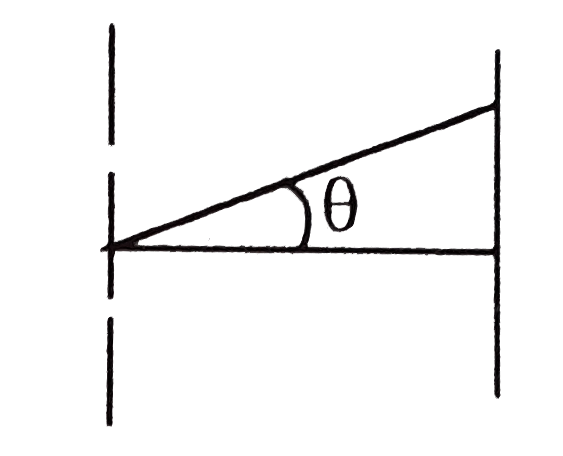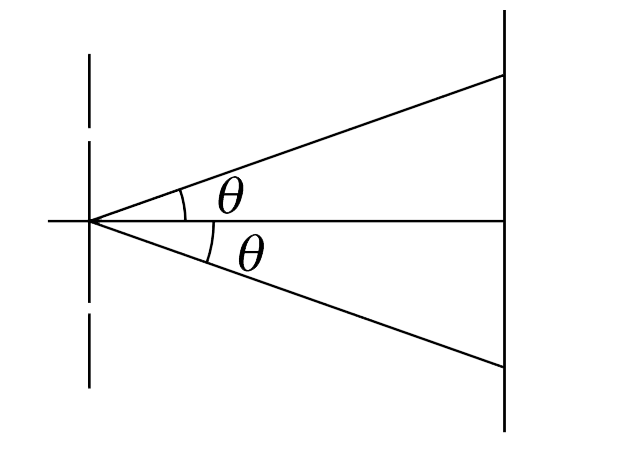Two slits separated by 0.33mm.A beam of 500nm light strikes the slits producing an interference pattern.Tegh number of maxima observed in the angular angle range−30∘<θ<30∘

300
150
599
149
The correct Answer is:C
Step by step video & image solution for Two slits separated by 0.33mm.A beam of 500nm light strikes the slits producing an interference pattern.Tegh number of maxima observed in the angular angle range-30^(@)ltthetalt30^(@) by Physics experts to help you in doubts & scoring excellent marks in Class 12 exams.
Updated on:21/07/2023Topper's Solved these Questions
- WAVE OPTICS BOOK - MOTIONCHAPTER - WAVE OPTICS EXERCISE - EXERCISE - 2 (Level - I) (Objective Problems | JEE Main) Section C,D - Other Experiment + YDSE thin Film
12 Videos
- WAVE OPTICS BOOK - MOTIONCHAPTER - WAVE OPTICS EXERCISE - EXERCISE - 2 (Level - II) (Multiple Correct | JEE Advanced) Section A - Interference Problems + Wavefronts & Hugen’s Principle
1 Videos
- WAVE OPTICS BOOK - MOTIONCHAPTER - WAVE OPTICS EXERCISE - EXERCISE - 2 (Level - I) (Objective Problems | JEE Main) Section A - Interference Problems + Wavefronts & Hugen’s Principle
7 Videos
- WAVE MOTION BOOK - MOTIONCHAPTER - WAVE MOTION EXERCISE - Exercise - 3 Section - B (Previous Years Problems)
7 Videos
- WAVESBOOK - MOTIONCHAPTER - WAVESEXERCISE - EXERCISE -4 (Level -II) (previous year JEE Advanced)
10 Videos
Similar Questions
Two slits are separated by 0.320 mm. A beam of 500 nm light strikes the slits, producing an interference pattern. Determine the number of maxima observed in the angular range −30.0∘<θ<30.0∘.
View SolutionIn a Young's double slit experiment, the slits are placed 0.320 mm apart. Light of wavelength λ=500 nm is incident on the slits. The total number of bright fringes that are observed in the angular range −30∘≤θ≤30∘ is :
View Solution
Knowledge Check
Two slits separated by 0.33mm.A beam of 500nm light strikes the slits producing an interference pattern.Tegh number of maxiam observed in the angular angle range−30∘<θ<30∘
 A300B150C599D149
A300B150C599D149In a Young's double slit experiment, light of 500 nm is used to produce an interference pattern. When the distance between the slits is 0.05 mm, the angular width (in degree) of the fringes formed on the distance screen is close to:
A0.17∘B0.07∘C0.57∘D1.7∘
In YDSE, two slits are illuminated by two light sources of same wavelength. Will you observe interference pattern ?
View SolutionIn Young’s double-slit experiment, the separation between two slits is d = 0.32 mm and the wavelength of light used isλ=5000∘A. Find the number of maxima in the angular range−sin−1(0.6)≤θ≤sin−1(0.6)

View SolutionLaser light of wavelength 630 nm incident on a pair of slits produces an interference pattern in which the bright fringes are separated by 8.1 mm. A second laser light produces an interference pattern in which the fringes are separated by 7.2 mm. Calculate the wavelength of the second light.
View SolutionLaser light of wavelength 640 nm incident on a pair of slits produces an interference patterns in which the bright fringes are separated by 8.1 mm. A second light produces an interference pattern in which the fringes and separated by 7.2 mm. Calculate the wavelength of the second light.
View SolutionLaser light of wavelength 630 nm incident on a pair of slits produces an interference pattern in which the bright fringes are separated by 8.1 mm. a second light produces an interference pattern in which the fringes are separated by 7.2 mm. calculated the wavelength of the second light.
View SolutionLaser light of wave length 600 nm incident on a pair of slits produces an interference pattern in which the bright fringes are separated by 8mm. A second light produces an interference pattern in which the fringes are separated by 12 mm. Calculate the wavelength of the second light.
View Solution
